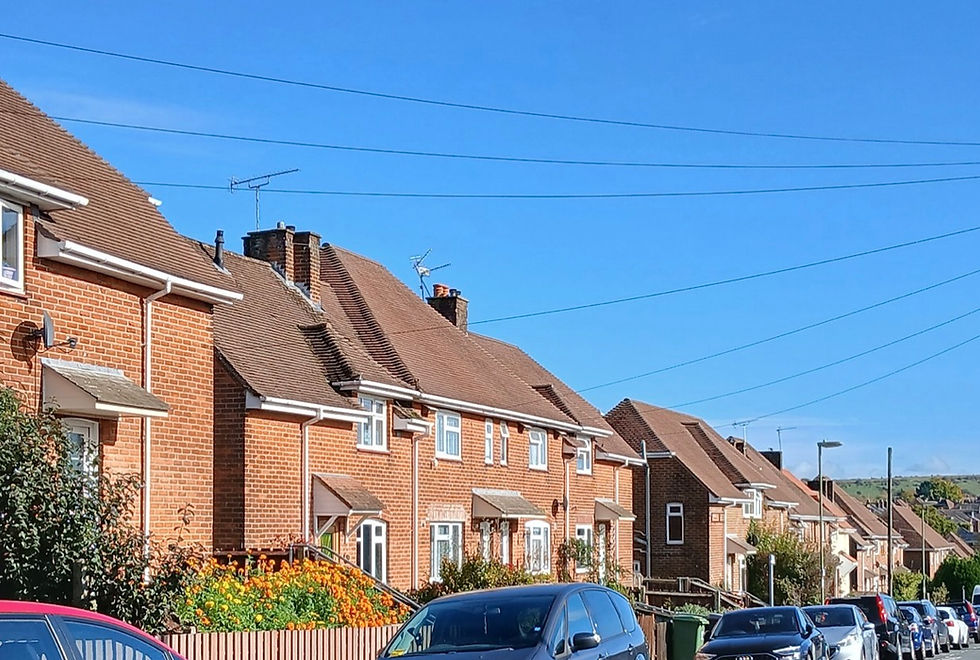We know all about the "r" rate but what about the "occupation" or "o" rate..?
- Oct 8, 2020
- 4 min read
Updated: Oct 13, 2020
In a previous blog (“COVID-19: opportunity knocks..”) we asked the million dollar question: “how many of the thousand or so Swift boxes now installed across the county are actually being used, and by what?”
The fact remains that in most areas we simply don’t know yet we rarely get asked what the chances are of Swifts moving in, perhaps reflecting most people’s understanding that if boxes aren’t put up, then Swifts definitely won’t colonise!
However, this is not something that can be taken for granted when dealing with planning professionals. There are many good reasons why planning authorities should make the integration of Swift bricks in new housing developments obligatory, least of all because this simple decision could ultimately result in tens, if not hundreds, of thousands of new breeding sites for Swifts across Hampshire.

Perversely, arguing for the installation of Swift bricks in order to conserve Swifts is not the best way to get Swift bricks into new developments. Swift bricks recreate the natural holes and crevices used by other declining urban species of bird such as the red-listed House sparrow and Starling, and also provide nest sites for other species such as Great tit, House martin and roosting spaces for many other species, especially in the winter. What planners really want to see is a “universal nest site”, one which caters for all declining urban species. To help them in this regard we need to prove that Swift bricks are effectively a “universal” nest site, brilliant for Swifts, but also perfectly suitable for other species.
House Martin and House Sparrow - Photos above with kind permission of Hugh Hastings
Obtaining such evidence relies on having Swift bricks installed in a substantial number of new properties combined with a systematic approach to surveying these bricks to assess how they are being used. Foremost in this has been the Duchy of Cornwall which has insisted on the routine installation of Swift bricks in all their new developments, primarily in south west England, but including one at Luzborough Green, on the outskirts of Romsey. To their credit they have now instituted, with help from Stephen Fitt of the RSPB and Tim Gray of Cascapedia Consulting, a survey of the integral bird bricks in all their developments.
Luzborough Green, Romsey
The development at Romsey is by the Ashfield Estate working in partnership with two builders. A total of 61 integral nest boxes have been installed in the 56 properties over a 2 year time period so some bricks have now been in situ for 2 seasons, the remainder were in place for the 2020 breeding season.
A thorough survey of these bricks during a full breeding season has yet to be completed but visits have indicated that 5 out of 35 bricks in Phase 1 were occupied in 2019 and 19 were occupied in 2020 with 4 bricks being used in both years. In one brick Starlings reared a brood in May 2020 followed by a brood of House sparrows in July. Starlings and House sparrows have been the only observed occupants of the boxes so far and although Swifts were observed flying overhead in July 2020 none have yet been seen coming down to roof level to investigate. Interestingly only one of the 26 boxes in the second phase of properties, which were complete externally by February 2020, have yet been occupied. Perhaps this relates to food availability and population size.
So overall this is a great result as without the provision of the nest bricks there would have been no House Sparrows or Starlings nesting here at all. Given the rapid colonisation of the bricks the occupancy rate should increase markedly in 2021 and beyond, approaching the figures obtained in the south-west where preliminary survey results of Nansledan and Tregunnel Hill in Newquay, Cornwall have shown that 45% of integral nest boxes surveyed are already showing signs of occupation. These developments are very similar to that at Luzborough and also include integral Swift/sparrow or Starling nest boxes at an average of one per property.

Luzborough Green, Romsey
In terms of Swifts the data from the south-west are promising. Swifts have been seen prospecting in one of the above-mentioned developments, and in Exeter House sparrows and Swifts were breeding 2 to 3 years after a Premier Inn with integrated Swift bricks had been completed. Circumstantial evidence suggests that where Swifts and House sparrows are competing for a nest site the swifts are usually dominant and it has been suggested that a cock House sparrow using a nest hole as a calling perch is as effective as playing calls to attract prospecting Swifts.
At Luzborough, the adjacent housing estate has a good population of House sparrows and Starlings and this has clearly helped to speed up colonisation. At the time of the visits this summer it has been great to hear the chattering of Starlings and cheeping of House sparrows which made the whole place come alive.
Plans have been approved for The Ashfield Partnership to build a further 300 homes at Hoe Lane, North Baddesley with commencement expected in 2021. All these new homes will have bird bricks installed as a matter of course at an average rate of one per dwelling. We just need all other house builders to do the same.
Links:
https://www.ashfieldpartnership.com/ashfield-partnership/luzborough
https://nansledan.com/nansledan-residents-asked-to-help-with-bird-box-survey/












Comments